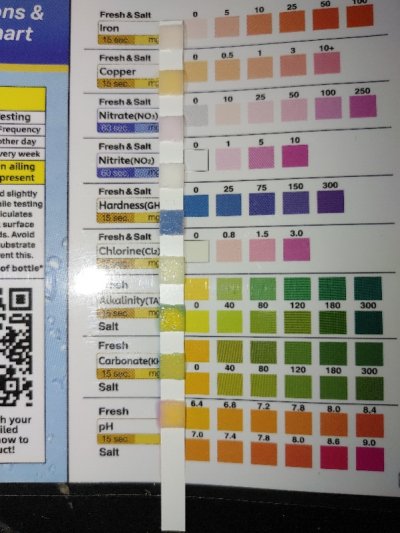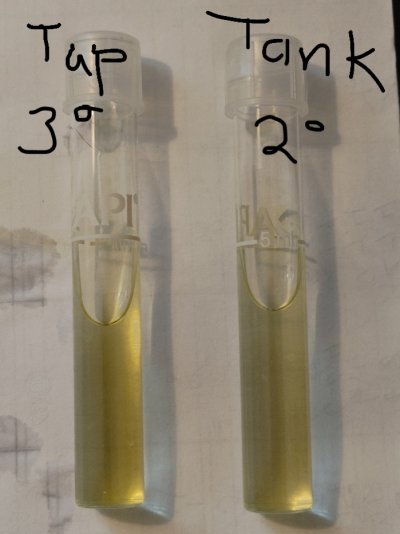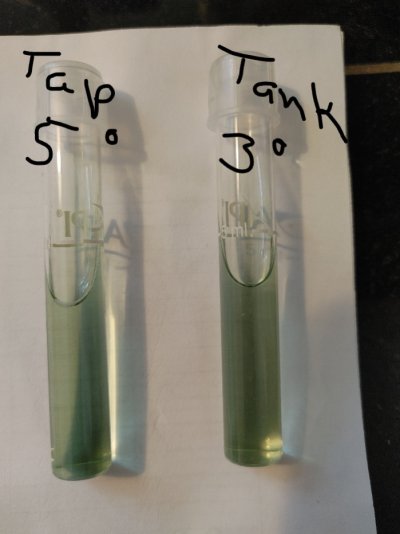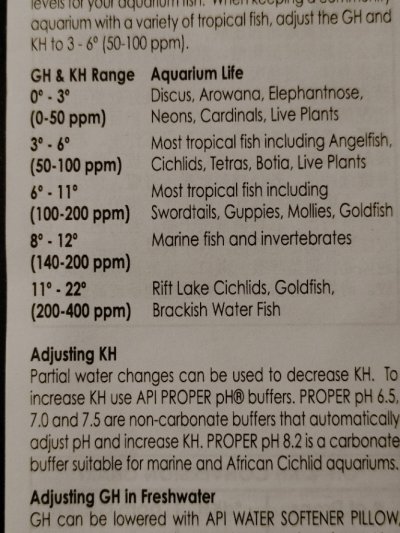Hello, I tried searching for this but nothing would come up so posting this now.
I have a 55 gallon tank that just completed cycling. I did a 25% water change because the narites were between 20 and 40 ppm. I have been testing the water daily, before feeding in the morning using API testing kit. The pH before water change for 2 weeks averaged 7.6. The day of W\C it was 7.2, after w/c it dropped to 6.8, then 6.6 now between 6.0 & 6.4. I pulled a pH on my tap water and it is 6.0 -6.4 - I am on well water.
I have watched videos on this and I hear to add sodium bicarb or crushed coral (mixed reviews about that working). Since my tap water is normally low, and now that the tank has cycled, should I look at supplementing? If so, what can I put in my aquarium (or cannister) that will help up the pH. I have Angelfish on order and due next week so want to get this going right.
Thanks
I have a 55 gallon tank that just completed cycling. I did a 25% water change because the narites were between 20 and 40 ppm. I have been testing the water daily, before feeding in the morning using API testing kit. The pH before water change for 2 weeks averaged 7.6. The day of W\C it was 7.2, after w/c it dropped to 6.8, then 6.6 now between 6.0 & 6.4. I pulled a pH on my tap water and it is 6.0 -6.4 - I am on well water.
I have watched videos on this and I hear to add sodium bicarb or crushed coral (mixed reviews about that working). Since my tap water is normally low, and now that the tank has cycled, should I look at supplementing? If so, what can I put in my aquarium (or cannister) that will help up the pH. I have Angelfish on order and due next week so want to get this going right.
Thanks




